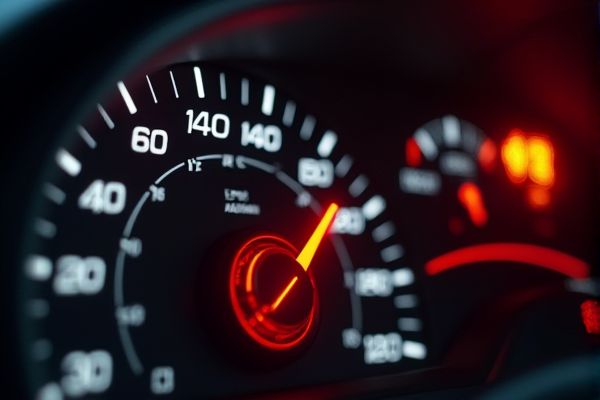
A Pontiac Bonneville's check engine light indicates potential issues with the engine or emission control system, such as misfires, sensor malfunctions, or problems with the catalytic converter, making it critical to investigate immediately. Using an OBD-II scan to retrieve diagnostic trouble codes can efficiently pinpoint the root cause, ensuring timely repairs and sustained optimal performance.
Pontiac Bonneville check engine light on meaning
Faulty Gas Cap
A loose or faulty gas cap can cause the check engine light to illuminate due to unintended emissions.
Mass Airflow Sensor Issues
Problems with the mass airflow sensor can lead to reduced engine performance and trigger the check engine light.
Coolant Level Issues
Low coolant levels, especially below the sensor level, can cause the check engine light to turn on.
Temperature Sensor Malfunctions
Faulty temperature sensors can trigger the check engine light, often related to seasonal changes.
Thermostat Problems
Issues with the thermostat can also cause the check engine light to illuminate.
Catalytic Converter Issues
Problems with the catalytic converter can trigger the check engine light and affect vehicle performance.
Ignition Misfires
A flashing check engine light may indicate ignition misfires, which can be serious if left untreated.
Battery Issues
Electrical malfunctions due to battery problems can trigger the check engine light.
Loose Ignition Wires
Disconnected ignition wires can cause a blinking check engine light, often associated with engine misfires.
For car users
If your Pontiac Bonneville's check engine light comes on, safely pull over, reduce your speed, and briefly inspect for obvious issues such as low oil levels, overheating, or unusual noises. Then use an OBD-II scanner or call a trusted mechanic as soon as possible to diagnose the error code and prevent further damage.
Ignoring the check engine light
Ignoring your Pontiac Bonneville's check engine light can lead to progressively worse issues such as reduced fuel efficiency, engine misfires, part failures, and even damage to crucial components like the catalytic converter, ultimately resulting in expensive repairs. Prioritizing an immediate diagnostic assessment not only prevents further degradation and costly fixes but also ensures improved performance, compliance with emission standards, and sustained overall vehicle reliability.
How to reset?
To reset the Pontiac Bonneville's check engine light, connect an OBD-II scanner to the diagnostic port, retrieve and clear any trouble codes, and ensure that all underlying issues--such as faulty sensors or emissions system errors--are repaired. After clearing the codes, drive the vehicle for several cycles to allow the onboard computer to relearn its operating parameters and verify that the error has been fully resolved.
A Pontiac Bonneville with a check engine light may incur diagnostic costs of around $70-$100, while actual repairs can range from roughly $100 to over $1,500 based on the specific fault--such as sensor replacements versus more extensive engine or emissions system issues. A comprehensive diagnostic evaluation is essential to accurately determine the needed repairs, ensuring that parts and labor estimates are appropriately scaled to resolve the underlying problem efficiently.
Future prevention
Ensure routine maintenance with scheduled engine diagnostics, oil and spark plug changes, and sensor evaluations to prevent common faults in the Pontiac Bonneville that trigger the check engine light. Prioritize immediate repairs for issues with the oxygen sensor, fuel system, and catalytic converter by using quality parts, thorough error code analysis, and precise tuning to maintain optimal engine performance.
